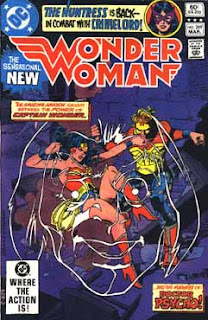Our Land of Azurth game continued with the party awaiting the archivist in the ancient, abandoned lounge in the depths of the city of Yai. Unfortunately, the Archivist returns in the custody of young guards of Yai who arrest the party. The leader would have summarily executed them had not one of his juniors named Irwin-37 recognized them as the characters from a popular entertainment. In an attempt to prove who they were he asked trivia questions about their adventures, but they barely remember the details and didn't do so well.
Still, it was good enough to so doubt and they were escorted to the city so that the Elders could decide what to do with them. They find out on the way that the show about them is the creation of the reclusive celebrity producer, Cory-01.
In the more vibrant areas of the domed city they are imprisoned while awaiting an audience with the Elders. Irwin-37 reveals that the city is indeed a ship, an ark, sent into space in a long, elliptical orbit to return to Earth after the planet had sufficiently recovered from a cataclysm and could be repopulated by the people for the ark. Apparently, though, something went wrong as they arrived to a world still dangerous and overrun with mutants (which he assumes the party to be). Irwin-37 tells them it has been generations since they landed, but the Elders feel the outside is full of contagion.
After Irwin leaves, a weird, unicycle vehicle brings a mysterious visitor and his body guards. He somehow is able to free Kully and beckons him to come forward. Kully is reluctant, but the visitor reveals himself to be Kory Keenstep, his father! Kully goes with him.
Kory reveals himself to be the producer Cory-01. He connived his way into Yai society using tech from the Toad Temple. He noticed they had read the Azurth book, so he sold them on further adventures of our heroes. He later revealed that he had come by these tales by spying on the party using a device of Yai.
Unfortunately, his production has been shut down due to the Elders' concerns that it was corrupting the morals of the youth. Kory has an idea to convince them using a "ghost trick" he got from an old book he read in Yai. He claims to have a way to send Kully back in time to haunt the Elders and somehow change their minds. He offers Kully a disguise that looks like the outfit warn by the mysterious stranger the party meet in the future.
Meanwhile, the rest of the party got an audience with the Elders. Well, not in person with the giant images of the three Elder's heads. They don't want to listen to the party's concerns about the Wizard and the shadows. They are aware of the Wizard's menace, but dismiss his ability to effect them. The party does get through to them sufficiently that they at least agree to consider their words.
The group is moved from the jail, at least, to better quarters, but they are still prisoners. Kully returns and tells them what his father said. Later, Kory comes to visit and they try to convince him to help, but predictably he is unwilling to stick his neck out--until they mention the Shadows. He's heard them talk about what they saw in the future when he was spying on them, but didn't see any of the events they were describing. He tells them he can send them to the future again, and they can get the images he needs to make a special--essentially a propaganda film to convince Yai to join the fight against the Wizard. The party doesn't trust him, but they agree.
Convincing Irwin-37 to give them a visit with Kory the next day, they are surprised to see the time machine he promised isn't a machine at all but more like a magic ritual. This is why he couldn't send any Yai folk through time: they don't have the talent for it. He explains it won't be their bodies but their "thoughtforms" or something.
The party prepares. Kully is to go to the location of their other selves and film them--becoming the mysterious stranger the others always suspected he was. The rest of the party will stay hidden and film the Gloom Elves and their Shadow allies outside.
The ritual begins, but it doesn't go as smoothly for Shade as for the others...
To be continued.


































